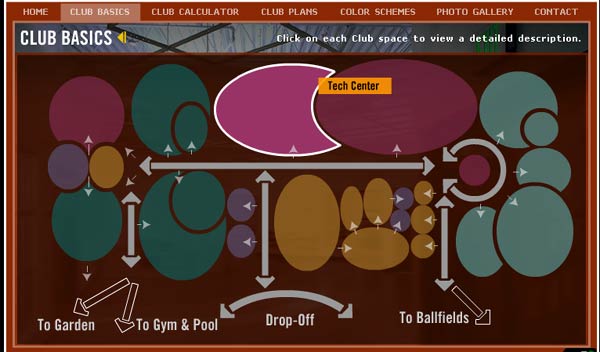[31] Kidbuilding. 2004. <http://www.kidbuilding.org/flash.html> (commentary) (efferent)
This site won a 2003 Webby Business Award for Good Deeds. (IDEO [24], PeopleSoft [53], Bankrate [3], and brandchannel [5] also won 2003 Webby Awards.) The judges explain the site: "The Kidbuilding Web site, the online arm of the Boys & Girls Clubs of America’s Building Services division, has created an innovative, flash-based application that streamlines a time-consuming and costly process – and does it with emotional impact. [117] "
Part of this emotional impact stems from the engaging colors and very thoroughly explained anchors:

Screenshot used by permission.
The site looks fun and engaging. Like Earthtrends [12], the anchors clearly explain what the reader will learn at the destination node, from calculators to determine club requirements to examples of floor plans. These are denotative links in that they name the destination node, but hold connotations of safe, fun, and easy in the easy to understand and noncryptic language of the anchors themselves.
The menu anchors are repeated above and below, providing quick access and explained access. These anchors frame a flash movie that runs in the center, and do not change, providing a further sense of security and permanence in the site. Unlike Questacon's [55] flashy anchors or BBC's [4] comic ones, the anchors do not overtly appeal to children, but use friendly colors to entice readers.
The site uses a conceptual floor plan as an anchor map as well. Like Questacon's spatial map, this corresponds to a physical location. Like Marble Springs [36], the map is a stepping stone for more information about what resides at that location.

Screenshot
used by permission
Here we can click to get a detailed description and an anchor back to the map. This may be an example of Anna Gunder's biconditional anchors [89], but if so it is heteroanchoral rather than homoanchoral as the anchors that lead to the detailed explanation and back to the map are not the same.

Screenshot
used by permission